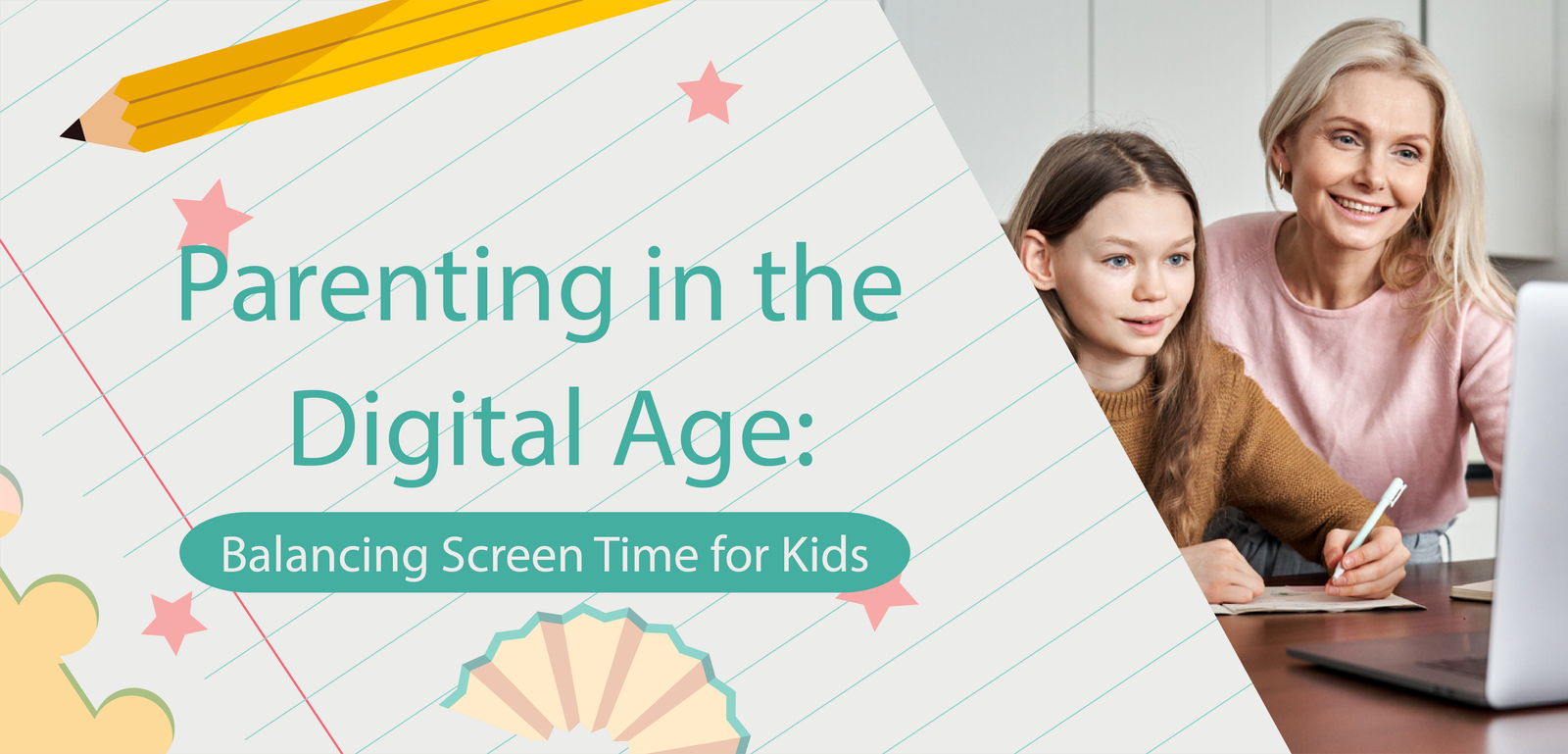Mastering Parenting in the Digital Age: A Guide to Balancing Screen Time for Kids
In today’s fast-paced world, parenting in the digital age presents both incredible opportunities and unique challenges. As we strive to provide our children with the best tools for success, it’s crucial to find a delicate balance when it comes to their screen time. This comprehensive guide on Parenting in the Digital Age will empower you with valuable insights, tips, and strategies to navigate the digital landscape while fostering healthy screen time habits for your kids.
Understanding the Digital Age
Before we dive into parenting tips, let’s gain a clear understanding of what the Digital Age entails:
Defining the Digital Age
- The Digital Age refers to the era characterized by the widespread use of digital technology, including smartphones, tablets, computers, and the Internet.
- It has reshaped various aspects of our lives, including how we communicate, learn, work, and entertain ourselves.
The Digital Age and Children
- Children today are growing up in a digital environment, surrounded by screens and devices from an early age.
- This exposure offers numerous benefits but also raises concerns about its impact on their development.
Benefits of Technology
- Digital technology provides access to a vast repository of information and educational resources.
- It enhances learning through interactive apps, educational games, and online courses.
- Technology fosters communication, connecting children with friends and family, even at a distance.
Challenges of Excessive Screen Time
- Excessive screen time can lead to physical and mental health issues, including sedentary behavior, poor sleep patterns, and eye strain.
- It may hinder the development of essential life skills, such as social interaction, creativity, and problem-solving.
- Parents often grapple with concerns about online safety, cyberbullying, and the potential exposure to inappropriate content.
Effective Strategies for Parenting in the Digital Age
Navigating the digital landscape requires a thoughtful approach that combines guidance, communication, and moderation. Here are essential strategies for parenting in the digital age:
1. Set Clear Screen Time Guidelines
- Establish clear rules and expectations for screen time from an early age.
- Create a daily schedule that designates specific times for screen use, schoolwork, physical activities, and family time.
- Consider age-appropriate limits recommended by experts.
2. Lead by Example
- Be a positive role model for your children by demonstrating responsible and balanced screen use.
- Engage in digital activities together to bond and share positive experiences.
- Encourage the use of technology for learning and creativity.
3. Encourage Educational Screen Time
- Curate a selection of educational apps, games, and content that align with your child’s interests and age.
- Monitor the quality of educational content and ensure it fosters skill development.
- Use technology as a tool to enhance your child’s learning experience.
4. Promote Outdoor and Offline Activities
- Prioritize physical activity and outdoor play to counteract sedentary screen time.
- Designate tech-free zones in your home, such as the dining room and bedrooms, to promote face-to-face communication and quality family time.
5. Monitor Screen Content
- Stay actively involved in your child’s digital world by monitoring the content they consume.
- Utilize parental control tools and content filters to safeguard against inappropriate online material.
- Encourage your child to report any kind of uncomfortable online experiences or encounters with cyberbullying.
6. Foster Digital Literacy
- Teach your child essential digital literacy skills, including critical thinking, online safety, and responsible behavior.
- Discuss the importance of protecting personal information and respecting others’ privacy.
- Encourage skepticism and the evaluation of online information for accuracy and credibility.
7. Initiate Open and Ongoing Conversations
- Maintain open and non-judgmental communication with your child about their digital experiences.
- Create an environment where they feel comfortable sharing concerns, questions, or any issues they encounter online.
- Address online safety, cyberbullying, and ethical behavior through age-appropriate discussions.
8. Balance Screen Time with Quality Time
- Emphasize the importance of quality family time without screens.
- Engage in activities that promote bonding, such as reading together, cooking, or playing board games.
- Create memorable offline experiences that complement your child’s digital interactions.
9. Stay Informed and Updated
- Keep abreast of the latest digital trends, platforms, and apps that interest your child.
- Stay informed about online safety best practices and potential online risks.
- Be prepared to adapt your parenting strategies as technology evolves.
10. Be Supportive and Patient
- Understand that finding the right balance between screen time and other activities is an ongoing process.
- Be patient with your child as they navigate the digital world, offering guidance and support.
- Seek professional advice or counseling if you encounter significant challenges or concerns.
Read Also: 5 Proven Strategies to Help Parents Manage Homework Stress in School-Age Kids
FAQs:
Q1: How can I motivate my child to spend less time on screens?
A1: Offer incentives for non-screen activities, such as outdoor play, and create a rewards system.
Q2: What’s the recommended age for a child’s first smartphone or tablet?
A2: There’s no one-size-fits-all answer. Consider your child’s maturity, needs, and the purpose of the device.
Q3: How can I monitor my child’s online interactions?
A3: Use parental control apps and regularly check your child’s online activity, ensuring they understand responsible online behavior.
Q4: Is gaming in moderation okay for children?
A4: Moderation is key. Age-appropriate and educational games can have benefits, but excessive gaming should be avoided.
Q5: Are there resources for learning about online safety?
A5: Many organizations offer resources, including Common Sense Media and NetSmartz, to educate parents and children about online safety.
Q6: What’s the role of schools in managing screen time?
A6: Schools should have clear policies on screen time and promote balanced tech usage among students.
Q7: Can screen time affect a child’s sleep?
A7: Yes, excessive screen time, especially before bedtime, can disrupt sleep patterns.
Q8: How do I handle resistance from my child regarding screen time limits?
A8: Explain the reasons behind the limits and involve your child in setting reasonable boundaries.
Q9: Are there benefits to educational apps and online resources?
A9: Educational apps and online resources can supplement learning when used in moderation and with guidance.
Q10: How can I encourage my child to develop offline hobbies?
A10: Introduce your child to various offline hobbies, attend activities together, and offer positive reinforcement.
Conclusion
Parenting in the Digital Age requires a thoughtful and adaptable approach. By setting clear guidelines, leading by example, encouraging educational screen time, promoting outdoor activities, monitoring screen content, fostering digital literacy, initiating open conversations, balancing screen time with quality family time, staying informed, and offering support and patience, you can navigate the digital landscape successfully.
Remember that every child is unique, and what works for one family may differ from another. Flexibility and open communication are key to fostering healthy screen time habits while nurturing your child’s growth and development in the digital age.
Disclaimer: This article offers general guidance on parenting in the digital age and should not replace personalized advice from child development experts or psychologists. If you have specific concerns about your child’s screen time or behavior, consider seeking professional assistance.





